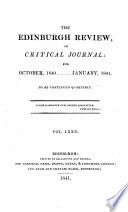 | British Association for the Advancement of Science - Science - 1833 - 646 pages
...of the colours of natural bodies. This theory is contained in the two following propositions. 1. " Every body reflects the rays of its own colour more copiously than the rest, and from their excess or predominance in the reflected light has its colour. 2. " The transparent parts... | |
 | Baptists - 1852 - 1080 pages
...our design being merely to present to the reader in a popular form a sketch of the labours of Newton in the science of light. Those who desire a short...bodies, Newton assumes, " that every body reflects the rays-of its own colour more copiously than the rest, and derives its colour from their excess, or predominance,... | |
 | C. L. Hardin - Philosophy - 1988 - 300 pages
...conception of color vision, first adumbrated by Newton, whom Land is fond of quoting in this context: "Every body reflects the Rays of its own Colour more copiously than the rest, and from their excess and predominance in the reflected Light has its Colour."1 Land then conducted a series... | |
 | Alex Byrne, David R. Hilbert - Philosophy - 1997 - 522 pages
.... . Minium reflects the least refrangible or red-making rays most copiously, and thence appears red Every Body reflects the Rays of its own Colour more copiously than the rest, and from their excess and predominance in the reflected Light has its Colour." The demonstrations in this... | |
 | English literature - 1841 - 588 pages
...reflected light, is equally true when applied to light transmitted through transparent coloured media. Every body reflects the rays of its own colour more copiously than the rest, and from their excess and predominance in the reflected light, has its colour. To illustrate this let us... | |
| |